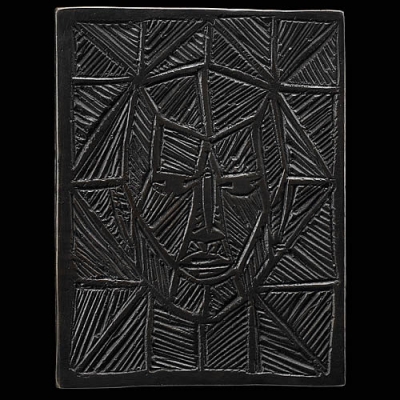Danuta Solowiej (b. 1962) was born in Białystok, Poland. Her art education started with tapestry and painting at the Art Lyceum in nearby Supraśl. She then completed her masters in sculpture at the Fine Arts Academy in Warsaw, specialising in medallic art under Professor Zofia Demkowska. She came to London in 1987 with her husband-to-be, the wood-carver Hugh Wedderburn. In 1988 she was an inaugural student of a contemporary medal course at the Royal College of Art in London, where she was later a visiting lecturer for over two decades. Since her arrival in London she has been an active member of BAMS and later of FIDEM. In 2017 she became a freeman of the Goldsmiths’ Company and was presented with the freedom of the City of London.
Solowiej works in several media, but modelling and polychromy are her preferred choices. Her focus on the tactile aspects of sculpture is reflected in the scale of her work. Exhibiting, teaching or making are important to her, but come in no particular order of preference as she finds that they influence and nurture each other. Over the years she has received a number of awards and commissions, some of which are represented in national and private collections worldwide. The plaster heads from her Witnesses series were shown in the British Museum’s 2018-19 exhibition Witnesses: émigré medallists in Britain, along with a selection of medals from the museum’s collection.
About her BAMS medal, Trust Your Instinct, the artist writes: ‘I work by elimination, in pursuit of pure form. I’m after the synthesis of an idea. I would like to think that I’m in step with Matsuo Basho, who said that “The haiku that reveals seventy to eighty percent of its subject is good. Those that reveal fifty to sixty percent, we never tire of.” I hope my medal falls within these parameters. I often think that medals are akin to haiku.
‘The medal Trust Your Instinct is a reflection on our reasoning as individuals versus herd behaviour. Is symmetry-breaking a sign of rebellion or wisdom, does one exclude the other, who is the odd one out, is it ever clear? Taking advantage of the anatomy of the medal, its two-sidedness and the edge, I find it helpful to think this through.’





